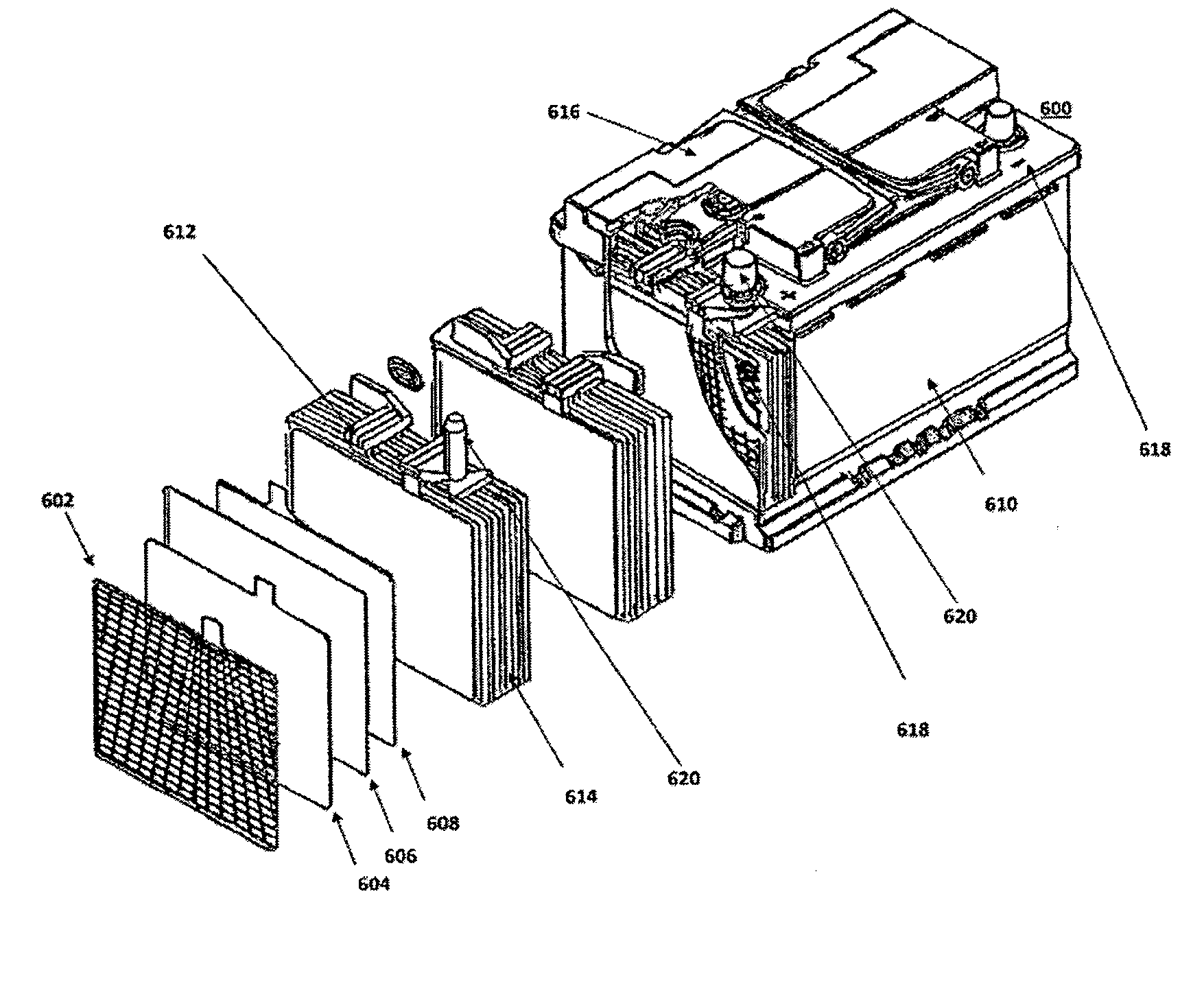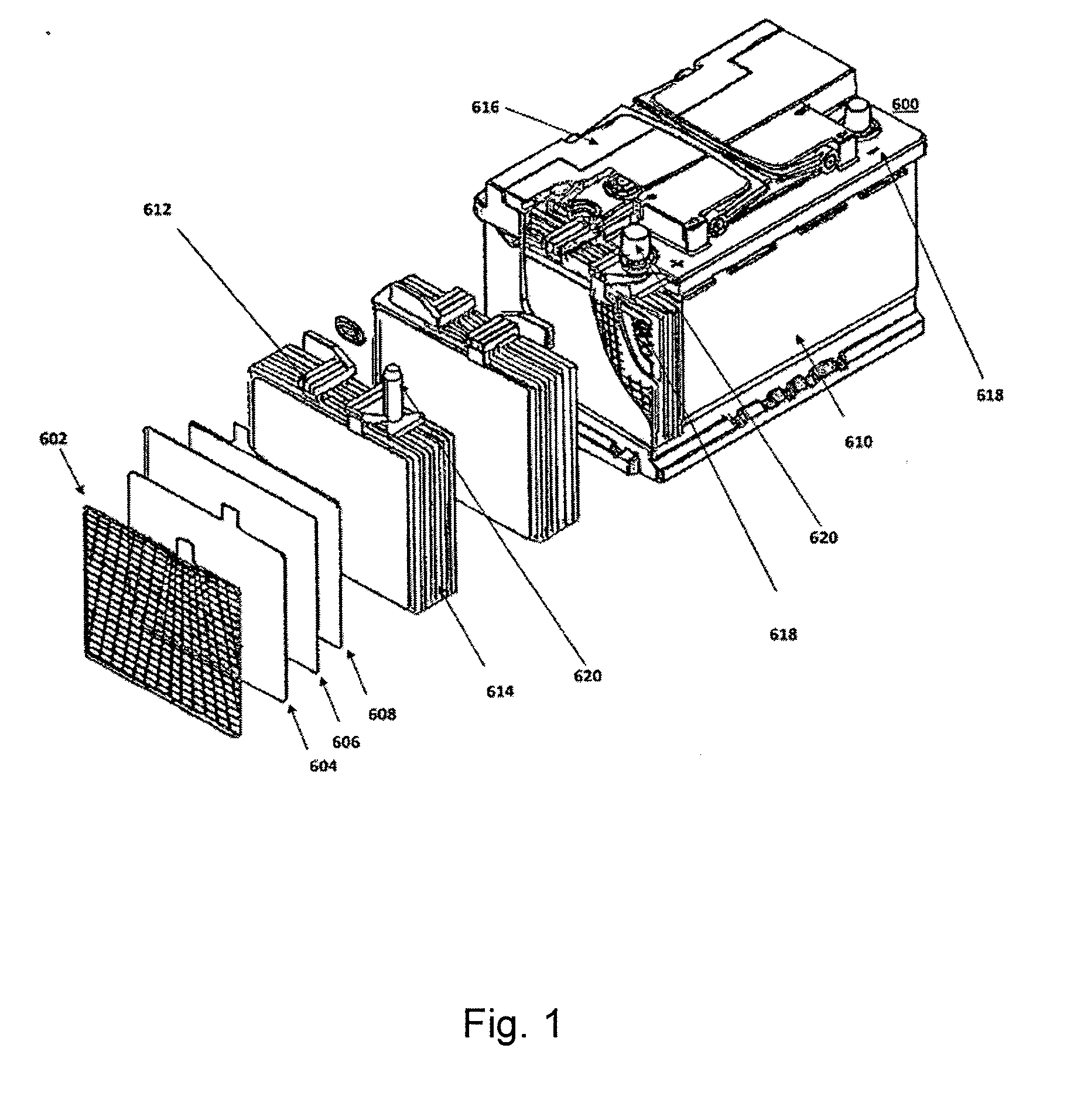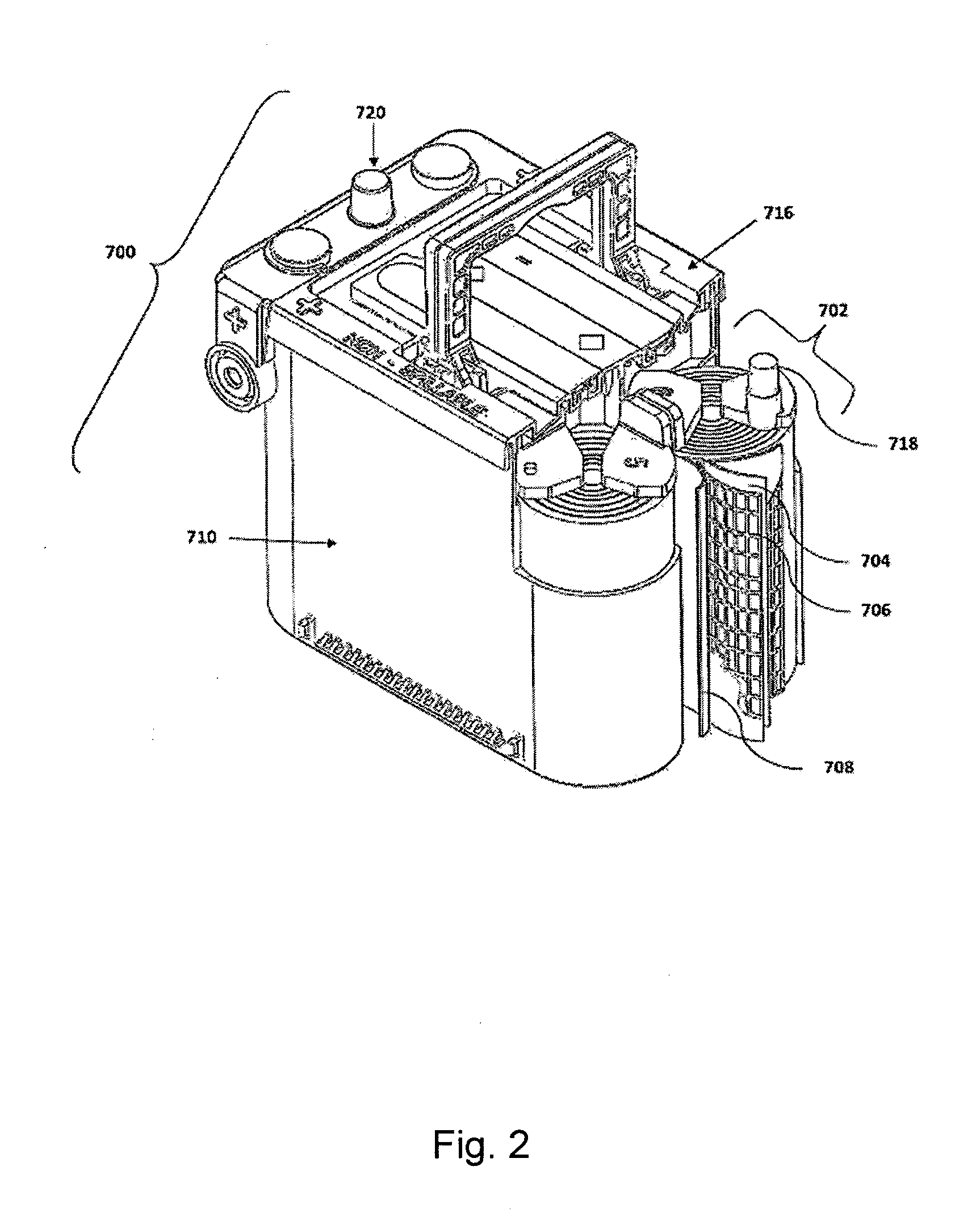Energy storage devices comprising carbon-based additives and methods of making thereof
a carbon-based additive and energy storage technology, applied in secondary cell manufacture, cell components, electrochemical generators, etc., can solve the problems of restricting the access of electrolyte to the electrode, and achieve the effects of increasing surface area and electronic conductivity, increasing static charge acceptance, and increasing power density
- Summary
- Abstract
- Description
- Claims
- Application Information
AI Technical Summary
Benefits of technology
Problems solved by technology
Method used
Image
Examples
example 1
[0080]As depicted in FIG. 5 Sample Nos. 2 and 3 comprise two carbon blacks obtained from a well-known U.S. carbon black supplier, which added to negative active material along with commercial battery grade expanded graphite ABG 1010 from Superior Graphite. The samples were tested against a control sample (Sample No. 1) using the above experimental protocols to determine the influence of carbon structure and surface area on battery performance.
[0081]The testing results are depicted in Tables 2-5 below and FIGS. 9-12.
TABLE 2Discharge CapacityC / 20C / 8C / 4CSample No.Sample ID(Ahr)(Ahr)(Ahr)(Ahr)1Control3.582.892.371.522Carbon Black 14.173.823.171.933Carbon Black 23.673.222.581.86
TABLE 3Static Charge AcceptanceSampleCurrent at 15 min% Change comparedNo.Sample ID(A)to Control1Control0.07802Carbon Black 10.123583Carbon Black 20.14991
TABLE 4Power DensityDischarge Power100%80%60%40%SampleSoCSoCSoCSocNo.Sample ID(W / Kg)(W / Kg)(W / Kg)(W / Kg)1Control58.839.321.311.072Carbon Black 171.9858.8242.7528.6...
example 2
[0083]As depicted in FIG. 5 Sample Nos. 4-8 comprise activated carbons from a well-known U.S. activated carbon supplier were chosen to explore the influence that the particle size and the pore size distribution of carbons have on the performance of lead-acid batteries. These samples were used in combination with commercial battery grade expanded graphite ABG 1010 from Superior Graphite.
[0084]The testing results are depicted in Tables 5-7 below and FIGS. 13-16.
TABLE 5Discharge CapacitySampleC / 20C / 8C / 4C2 C5 CNo.Sample ID(Ahr)(Ahr)(Ahr)(Ahr)(Ahr)(Ahr)1Control3.582.892.371.520.990.284Activated3.673.523.362.601.970.57Carbon 15Activated3.543.392.832.121.460.38Carbon 26Activated4.074.113.442.551.931.14Carbon 37Activated3.823.542.951.661.060.52Carbon 48Activated4.273.462.811.710.950.37Carbon 5
TABLE 6Static Charge AcceptanceSampleCurrent at 15 min% Change comparedNo.Sample ID(A)to Control1Control0.07804Activated Carbon 10.133715Activated Carbon 20.154976Activated Carbon 30.1771277Activated C...
example 3
[0086]As depicted in FIG. 5, Sample Nos. 9-12 comprise carbon-based additives suitable for use in the present invention containing composite components and / or functionalized carbon-based additives, to explore the influence that composite components have on the performance of lead-acid batteries. These samples were used in combination with commercial battery grade expanded graphite ABG 1010 from Superior Graphite.
[0087]The testing results are depicted in Tables 8-10 below and FIGS. 17-20
TABLE 8Discharge CapacitySampleC / 20C / 8C / 4C2 C4 CNo.Sample ID(Ahr)(Ahr)(Ahr)(Ahr)(Ahr)(Ahr)1Control7.385.293.752.161.340.619Carbon6.985.193.622.091.260.58Composite 110Carbon7.676.023.952.761.820.90Composite 211Func-8.006.394.743.162.181.15tionalizedCarbonComposite 112Carbon8.806.904.383.252.191.08Composite 4
TABLE 9Static Charge AcceptanceSampleCurrent at 15 min% Change comparedNo.Sample ID(A)to Control1Control0.17609Carbon Composite 10.2624910Carbon Composite 20.42314011Functionalized0.25645Carbon Comp...
PUM
| Property | Measurement | Unit |
|---|---|---|
| Temperature | aaaaa | aaaaa |
| Fraction | aaaaa | aaaaa |
| Fraction | aaaaa | aaaaa |
Abstract
Description
Claims
Application Information
 Login to View More
Login to View More - R&D
- Intellectual Property
- Life Sciences
- Materials
- Tech Scout
- Unparalleled Data Quality
- Higher Quality Content
- 60% Fewer Hallucinations
Browse by: Latest US Patents, China's latest patents, Technical Efficacy Thesaurus, Application Domain, Technology Topic, Popular Technical Reports.
© 2025 PatSnap. All rights reserved.Legal|Privacy policy|Modern Slavery Act Transparency Statement|Sitemap|About US| Contact US: help@patsnap.com



